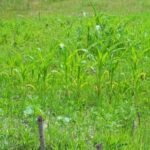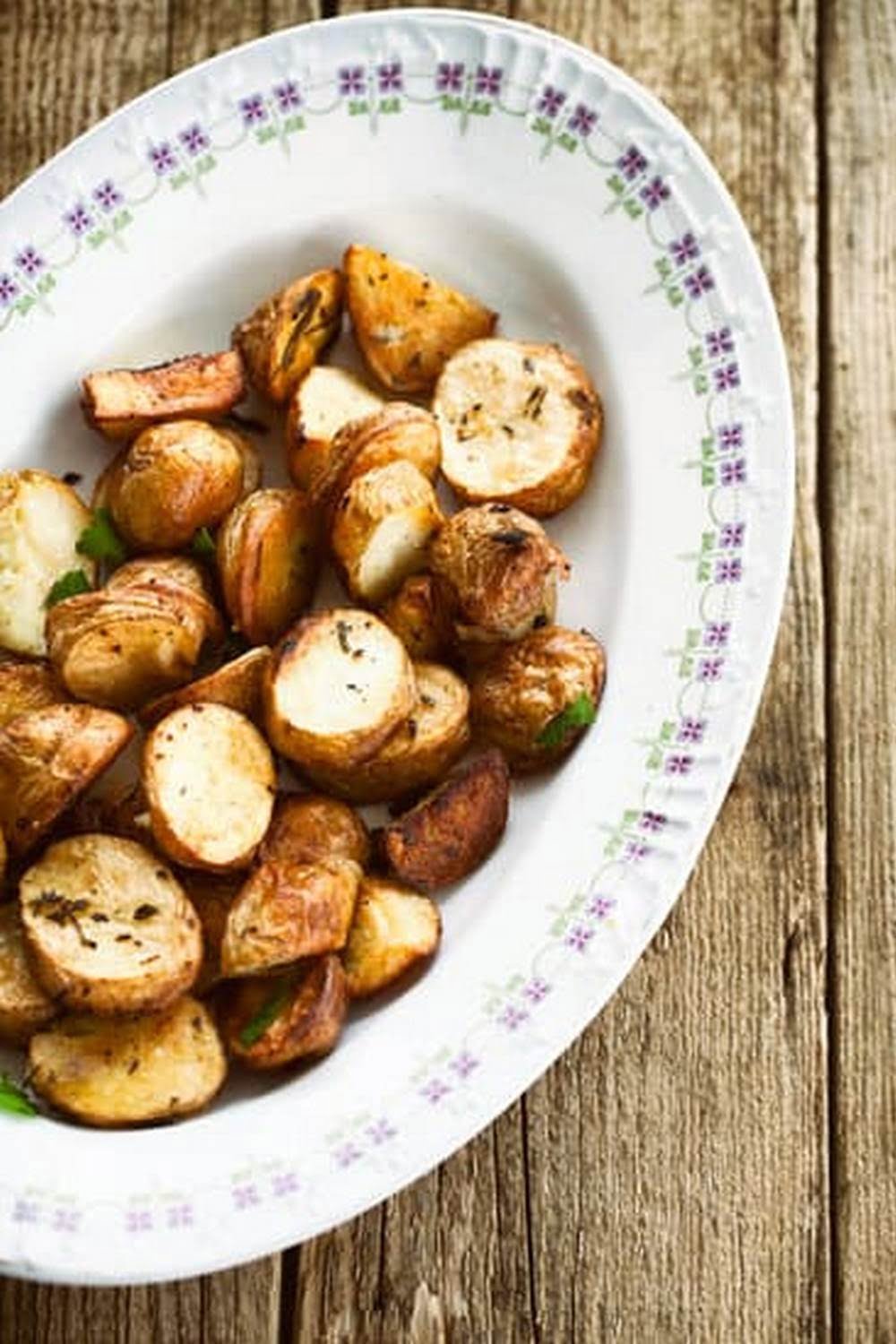Are you ready to start your northern Maryland vegetable gardening journey? From unique climate challenges to the best vegetable varieties for the region, there’s a lot to consider when starting your own garden.
Northern Maryland is known for its distinct climate, which can present both opportunities and challenges for vegetable gardeners. Understanding the specific needs of this region is crucial for a successful harvest. Whether you’re a seasoned gardener or just getting started, it’s important to tailor your approach to meet the demands of northern Maryland’s climate.
In this comprehensive guide, we’ll explore the unique climate of northern Maryland and provide valuable insights into the best vegetable varieties, soil preparation, frost dates, pest and disease management, watering strategies, harvesting tips and community resources available for northern Maryland vegetable gardeners. By understanding these key factors, you’ll be well-equipped to create a thriving vegetable garden in northern Maryland.
Best Vegetable Varieties for Northern Maryland’s Growing Conditions
When it comes to vegetable gardening in Northern Maryland, choosing the right varieties is crucial for success. The unique climate and growing conditions of this region require careful selection of vegetables that can thrive in cooler temperatures and withstand occasional frosts. Here are some of the best vegetable varieties for Northern Maryland’s growing conditions.
Root Vegetables
Root vegetables such as carrots, beets, and radishes are well-suited for Northern Maryland’s climate. Varieties like Scarlet Nantes carrots, Detroit Dark Red beets, and French Breakfast radishes are known to perform well in the region’s cooler temperatures.
Leafy Greens
Leafy greens like lettuce, spinach, and kale are excellent choices for Northern Maryland gardeners. Varieties such as Black Seeded Simpson lettuce, Bloomsdale spinach, and Lacinato kale are known for their resilience to colder weather and can be grown throughout the spring and fall seasons.
Cruciferous Vegetables
Vegetables from the cruciferous family, including broccoli, cauliflower, and Brussels sprouts, can also thrive in Northern Maryland. Varieties like Calabrese broccoli, Snowball cauliflower, and Long Island Improved Brussels sprouts are well-suited for the region’s climate.
These are just a few examples of vegetable varieties that have been proven to perform well in Northern Maryland’s unique growing conditions. When selecting seeds or transplants for your garden, be sure to look for varieties that are specifically recommended for northern climates to ensure a successful harvest. With careful planning and selection, you can enjoy a bountiful vegetable garden in Northern Maryland.
Tips for Preparing and Amending Soil in Northern Maryland
Understanding the Soil Composition in Northern Maryland
Northern Maryland has a unique soil composition that can affect the success of vegetable gardening. The region is known for its heavy clay soil, which can be challenging for gardeners. Additionally, the acidic nature of the soil can also pose challenges for growing certain vegetables. It is important for gardeners to understand the specific characteristics of their soil in order to effectively prepare and amend it for vegetable gardening.
Preparing and Amending Soil for Vegetable Gardening
One of the first steps in preparing soil for vegetable gardening in Northern Maryland is to test the soil pH. Most vegetables thrive in slightly acidic soil, so if the pH level is too low, gardeners may need to add lime to raise it to a more suitable level. Additionally, adding organic matter such as compost, aged manure, or mulch can help improve the structure and fertility of the soil.
Utilizing Raised Beds and Container Gardening
Due to the heavy clay nature of Northern Maryland’s soil, some gardeners may opt to utilize raised beds or container gardening. This allows them to have more control over the soil composition and drainage, creating an environment that is better suited for growing vegetables. Raised beds and containers also provide an opportunity to bring in high-quality topsoil and compost, creating ideal growing conditions for vegetables.
Understanding the Frost Dates and Seasonal Planting Calendar for Northern Maryland
One of the key factors to consider when planning a successful vegetable garden in Northern Maryland is understanding the frost dates and seasonal planting calendar. The climate in this region can be challenging, with the potential for late frosts in the spring and early frosts in the fall. It is important for gardeners to be aware of these dates in order to properly plan and time their planting efforts.
The average last frost date in Northern Maryland typically falls around mid to late April, while the first frost date is usually in mid to late October. However, it is crucial for gardeners to consult their local agricultural extension office or use online resources to determine the specific frost dates for their area, as they may vary slightly depending on microclimates.
With this knowledge in hand, gardeners can then use a seasonal planting calendar to schedule their planting activities accordingly. Cool-season crops such as lettuce, spinach, and peas can be planted as soon as soil can be worked in early spring, while warm-season crops like tomatoes, peppers, and squash should wait until after the last frost date. By following a seasonal planting calendar tailored to Northern Maryland’s climate, gardeners can maximize their chances of a successful harvest.
In addition to paying attention to the frost dates and seasonal planting calendar, it is also important for gardeners in Northern Maryland to be mindful of sudden temperature fluctuations that may impact their crops. Using techniques such as row covers or cold frames can help protect tender plants from unexpected late frosts and extend the growing season. Taking these proactive measures will ensure that gardeners are well-prepared for the unique climate challenges of vegetable gardening in Northern Maryland.
Dealing With Common Pest and Disease Issues in Northern Maryland Vegetable Gardens
When it comes to vegetable gardening in northern Maryland, one of the biggest challenges that gardeners face is dealing with common pests and diseases that can wreak havoc on their crops. The unique climate of northern Maryland creates an environment where certain pests and diseases thrive, making it essential for gardeners to be proactive in preventing and managing these issues.
One of the most common pest problems in northern Maryland vegetable gardens is the presence of aphids, spider mites, and cabbage loopers. These tiny insects can quickly infest plants and cause damage to leaves, flowers, and fruits. To combat these pests, it’s important for gardeners to regularly inspect their plants for any signs of infestation and take appropriate measures such as hand-picking the insects or using organic insecticidal soaps.
In addition to pests, northern Maryland vegetable gardens are also susceptible to a variety of diseases such as powdery mildew, blight, and bacterial wilt. These diseases can spread rapidly in the humid climate of this region, posing a significant threat to vegetable crops. To minimize the impact of these diseases, gardeners should practice good sanitation by removing any infected plant material, rotating their crops annually, and selecting disease-resistant varieties when possible.
| Pest/Disease | Preventive Measures |
|---|---|
| Aphids | Regularly inspect plants; use organic insecticidal soaps |
| Powdery mildew | Practice good sanitation; select disease-resistant varieties |
| Spider mites | Hand-pick the insects; use predatory mites as natural control |
By being vigilant about pest and disease management practices in their vegetable gardens, northern Maryland gardeners can ensure a bountiful harvest of healthy produce throughout the growing season. Implementing integrated pest management strategies and staying informed about best practices for disease prevention will ultimately lead to successful outcomes for vegetable gardeners in this region.
Additionally,collaborating with local agricultural extension services or joining gardening clubs can provide valuable resources and support from fellow gardeners facing similar challenges with pests and diseases in northern Maryland. Sharing knowledge and experiences within the community can help individuals navigate through common issues while enjoying the rewards of their hard work in their vegetable gardens.
Watering and Irrigation Strategies for Northern Maryland Vegetable Gardens
Northern Maryland has a unique climate that can pose challenges for vegetable gardening, especially when it comes to watering and irrigation. With hot, humid summers and variable precipitation, it’s essential for gardeners to have effective strategies in place to ensure their vegetables are adequately watered.
Here are some watering and irrigation strategies specifically tailored for northern Maryland vegetable gardens:
- Mulching: Mulching is a crucial technique for retaining soil moisture and preventing evaporation. Organic mulches such as straw or wood chips can be spread around the base of plants to help maintain consistent soil moisture levels.
- Drip Irrigation: Installing a drip irrigation system can be highly beneficial in northern Maryland, as it delivers water directly to the roots of plants, reducing water loss through evaporation. This method also helps prevent disease by keeping foliage dry.
- Watering Schedule: Establish a regular watering schedule, especially during dry periods. Vegetables typically require about an inch of water per week, so monitor rainfall and supplement with additional watering as needed.
Gardeners in northern Maryland should also consider the unique needs of different vegetables when planning their watering strategies. For example, cool-season crops like lettuce and spinach may need more frequent watering in the summer heat, while root vegetables like carrots and beets require consistent moisture to develop properly.
By implementing these efficient watering and irrigation strategies, northern Maryland vegetable gardeners can help their plants thrive despite the region’s challenging climate.
Harvesting and Preserving Tips for Northern Maryland Vegetable Gardeners
After putting in the hard work of planting and nurturing your vegetable garden in northern Maryland, the time will eventually come for harvesting your bountiful produce. But what comes next is just as important – preserving your harvest to enjoy throughout the year. Northern Maryland vegetable gardeners have the advantage of a relatively long growing season, but it’s still essential to know the best practices for harvesting and preserving their vegetables.
When it comes to harvesting, timing is crucial. Each vegetable has its own indicators that it’s ready to be picked, whether it’s a change in color, size, or texture.
For example, tomatoes should be harvested when they are fully colored and firm, while leafy greens like lettuce and spinach can be harvested when they reach a desirable size for eating. It’s also important to harvest vegetables at the right time of day, typically in the morning when they are at their peak freshness.
Once you’ve harvested your vegetables, proper preservation techniques can ensure you have a supply of fresh produce even after the growing season has ended. There are many methods for preserving vegetables such as canning, freezing, dehydrating, pickling, and fermenting.
Each method has its own requirements and best practices so that the flavor and nutritional value of the vegetables are retained. By learning how to properly preserve your harvest, you can enjoy the fruits of your labor long after your garden has stopped producing.
Community resources such as farmers’ markets and local gardening clubs can provide valuable information on harvesting and preserving tips specific to northern Maryland vegetable gardening. Additionally, attending workshops or events focused on food preservation can expand your knowledge and skills in this area. Sharing experiences and techniques with fellow gardeners can also provide valuable insights into how to make the most of your harvest all year long.
Community Resources and Events for Northern Maryland Vegetable Gardeners
In conclusion, Northern Maryland offers a unique climate for vegetable gardening, with its specific growing conditions and seasonal challenges. By choosing the best vegetable varieties and understanding the frost dates and planting calendar, gardeners can maximize their yield in this region. Additionally, preparing and amending the soil, dealing with pest and disease issues, and implementing effective watering strategies are all vital components of successful vegetable gardening in Northern Maryland.
However, it’s not just about the individual efforts of gardeners. Community resources and events play a crucial role in supporting and educating Northern Maryland vegetable gardeners. Whether it’s local gardening clubs, farmers’ markets, or workshops offered by extension services or nurseries, there are plenty of opportunities for gardeners to connect with fellow enthusiasts and learn from experienced growers.
Furthermore, these community resources can also provide valuable information on sustainable practices, organic gardening methods, and innovative techniques specific to Northern Maryland’s climate. By taking advantage of these resources and participating in events, gardeners can continue to improve their skills, overcome challenges, and find inspiration for their own vegetable gardens. Overall, the support of the community is an essential part of successful vegetable gardening in Northern Maryland.
Frequently Asked Questions
What Vegetables Grow Best in Maryland?
Certain vegetables thrive in Maryland’s climate and soil conditions. Vegetables like tomatoes, sweet potatoes, peppers, and squash do well in Maryland due to its warm summers and fertile soil.
What Vegetables Grow Best in Northern Gardens?
Northern gardens present their own unique set of challenges due to the shorter growing season and cooler temperatures. However, vegetables like broccoli, cabbage, carrots, beets, and potatoes tend to do well in these regions due to their hardy nature and tolerance for colder weather.
When Should You Plant Tomatoes in Maryland?
Tomatoes are best planted in Maryland after the last frost date, which typically falls between late April and early May. Planting tomatoes too early can expose them to potential frost damage, so it’s best to wait until the risk of frost has passed before planting them in Maryland.

If you’re looking to get into vegetable gardening, or are just looking for some tips on how to make your current garden better, then you’ve come to the right place! My name is Ethel and I have been gardening for years. In this blog, I’m going to share with you some of my best tips on how to create a successful vegetable garden.





